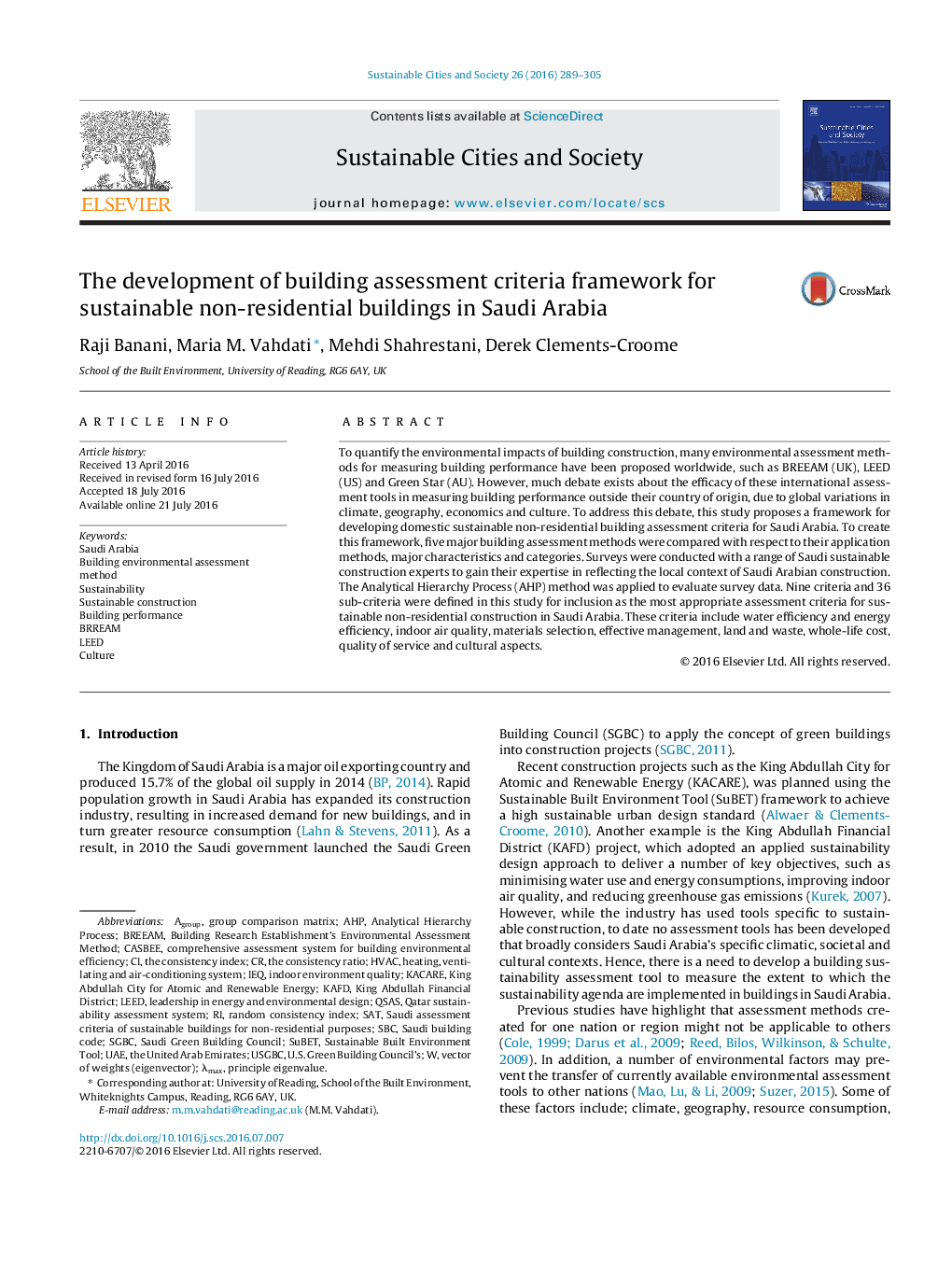| کد مقاله | کد نشریه | سال انتشار | مقاله انگلیسی | نسخه تمام متن |
|---|---|---|---|---|
| 308037 | 513516 | 2016 | 17 صفحه PDF | دانلود رایگان |
• The development of building assessment criteria framework for Saudi Arabia.
• The consideration of social factors in advancing sustainable construction in Saudi Arabia.
• The environmental factors are the most important aspect of sustainability in Saudi Arabia.
• There is a strong relationship between local context and buildings sustainability assessments.
To quantify the environmental impacts of building construction, many environmental assessment methods for measuring building performance have been proposed worldwide, such as BREEAM (UK), LEED (US) and Green Star (AU). However, much debate exists about the efficacy of these international assessment tools in measuring building performance outside their country of origin, due to global variations in climate, geography, economics and culture. To address this debate, this study proposes a framework for developing domestic sustainable non-residential building assessment criteria for Saudi Arabia. To create this framework, five major building assessment methods were compared with respect to their application methods, major characteristics and categories. Surveys were conducted with a range of Saudi sustainable construction experts to gain their expertise in reflecting the local context of Saudi Arabian construction. The Analytical Hierarchy Process (AHP) method was applied to evaluate survey data. Nine criteria and 36 sub-criteria were defined in this study for inclusion as the most appropriate assessment criteria for sustainable non-residential construction in Saudi Arabia. These criteria include water efficiency and energy efficiency, indoor air quality, materials selection, effective management, land and waste, whole-life cost, quality of service and cultural aspects.
Journal: Sustainable Cities and Society - Volume 26, October 2016, Pages 289–305
